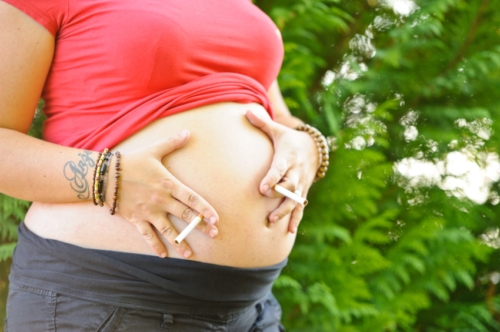 Smoking while pregnant has been a known cause of developmental defects in infants for almost half a century, with research on the matter dating back as far as the 1960’s. Unfortunately, as the CDC notes in a recently released statistical report, far too many women in this country continue to smoke while pregnant.
Smoking while pregnant has been a known cause of developmental defects in infants for almost half a century, with research on the matter dating back as far as the 1960’s. Unfortunately, as the CDC notes in a recently released statistical report, far too many women in this country continue to smoke while pregnant.
The findings, part of the CDC’s National Vital Statistics Reports, drew on data representing 95% of all births in the country and looked at what commonalities existed between pregnant smokers.
The report notes that about 11% of women who gave birth in 2014 were considered smokers—that is, they smoked during the three months prior to their pregnancy. Of this number, 24% managed to quit before becoming pregnant with another 20% quitting by their third trimester. Unfortunately, this means that overall roughly eight percent of women smoked at any point during the pregnancy.
Smoking-while-pregnant rates also varied significantly by geography, with California having the lowest rate (two percent) and West Virginia having the highest (27%). Although these smoking rates only represent a minority of women—slightly under four million babies born each year in the U.S.—even eight percent of pregnant women can result in a regrettably large number of affected children.
When the CDC researchers looked at who these smoking women were, the data was broken down further:
- The age group most likely to smoke while pregnant was between the ages of 20-24 (13%)
- In order of highest to lowest smoking rates, the demographics are Natives (22%), Caucasian (16%), Hispanic (three percent), and Asian (one percent).
- Unmarried women (18%) were roughly three times as likely as married women (six percent) to smoke while pregnant.
- Higher smoking rates also correlated with indicators of low socioeconomic status such as no recognition of high school education (16%) or receiving WIC benefits (15%).
- Women who sought prenatal care during the first trimester were among the lowest smoking rates (10%) compared to those who only sought care during the third trimester or who had none at all (17%).
- Teenagers had the highest smoking rate prior to pregnancy (14%) but also the highest quitting rate during pregnancy (26%).
The study only looks at smoking rates and does not offer theories or information about what may or may not motivate women to quit smoking during pregnancy or how informed women are or are not of the risks smoking can pose to the unborn child.
Smoking is known to be linked to premature birth, low birth weight, higher odds of developmental and mental problems, cerebral palsy, lung disease, and premature death in general. There is also an elevated rate of maternal death among smokers, primarily due to complications involving the placenta.
Sources for Today’s Article:
Curtin, S., et al., “Smoking Prevalence and Cessation Before and During Pregnancy: Data From the Birth Certificate, 2014.” National Vital Statistics Reports 65, no. 1; 2016; Accessed February 12, 2016. http://www.cdc.gov/nchs/data/nvsr/nvsr65/nvsr65_01.pdf.
“Births and Natality,” Centers for Disease Control and Prevention web site, July 20, 2015; http://www.cdc.gov/nchs/fastats/births.htm.
